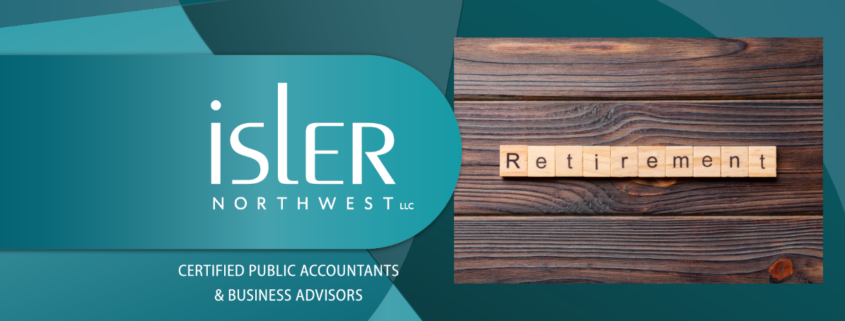You’ve hit your 40s or 50s, and suddenly, retirement doesn’t feel like a distant mirage. It’s real. The countdown is on. But here’s the good news: You’re in a prime position to play catch-up and fortify your future, using smart tax strategies to stretch your dollars further. Think of it as turning your financial cruise control into turbo mode.
This is where savvy planning, tax-advantaged tools, and a willingness to act now—not later—can make all the difference. Let’s unpack the strategies that can supercharge your savings.
Catch-Up Contributions: The Encore Your Savings Need
Imagine you’re at a concert. The lights dim, the crowd cheers, and the band rolls out an encore performance that blows the roof off. That’s what catch-up contributions are for your retirement savings—a second chance to amplify your game.
If you’re 50 or older, the IRS lets you sock away more than the standard limit into your 401(k), 403(b) Tax-sheltered Annuities, SIMPLE Plans, or IRA. For 2024, the inflation-adjusted catch-up contributions are:
- 401(k) Plans: Adds an extra $7,500 on top of the $23,000 (23,500 in 2025) regular limit.
- 403(b) Plans: Adds an extra $7,500 on top of the $23,000 (23,500 in 2025) regular limit.
- SIMPLE Plans: Adds an extra $3,500 on top of the $16,000 ($16,500 in 2025) regular limit.
- IRAs: Adds an extra $1,000 on top of the $7,000 regular limit.
If you’re age 60, 61, 62, or 63 in years after 2024, a special tax provision increases the catch-up contribution limits for 401(k) and 403(b) plans to the greater of $10,000 or 50 percent more than the regular catch-up amount. Thus, beginning in 2025 the 401(k) and 403(b) catch-up amount for individuals aged 60 through 63 will be $11,250 (1.5 x $7,500). For SIMPLE plans, this special catch-up amount for 2025 will be $5,250 (1.5 x $3,500).
Why it matters:
- If you’ve started saving late or had years of financial turbulence, this is your golden ticket to make up ground.
- Every extra dollar invested now has the potential to grow exponentially thanks to compounding.
Takeaway:
Max out your contributions. It’s not just about saving more; it’s about taking full advantage of what Uncle Sam allows. Choosing to skip this? It’s like leaving free concert tickets on the table.
Health Savings Accounts (HSAs): Your Triple Tax Advantage
An HSA isn’t just a savings account—it’s your financial Swiss Army knife. With an HSA, you get tax benefits on three fronts:
- Contributions are tax-deductible.
- Growth is tax-free.
- Withdrawals for qualified medical expenses? Also tax-free.
In 2024, individuals can contribute up to $4,150, and families up to $8,300. Plus, if you’re over 55 and not enrolled in Medicare, tack on an extra $1,000 (computed on a monthly basis). For 2025, the amounts will be $4,300 and $8,500.
Here’s the kicker: Unused HSA funds roll over year after year. By the time retirement hits, you can use your HSA to cover everything from Medicare premiums to out-of-pocket medical expenses.
Why it matters:
Medical expenses in retirement can feel like a bottomless pit. An HSA acts as your secret weapon, ready to soften the blow.
Takeaway:
Max out your HSA contributions annually. Treat it as a stealth retirement account. Future-you will thank you when those medical bills roll in.
Roth IRA Conversions: Tax-Free Growth, Forever
Think of a Roth IRA as the retirement unicorn—rare, magical, and oh-so-worth-it. Converting a traditional IRA to a Roth means paying taxes on the converted amount now so that your withdrawals in retirement are tax-free.
This move makes sense if:
- You anticipate being in a higher tax bracket later.
- You want to lock in today’s tax rates before they potentially climb.
But timing is everything. You don’t want to push yourself into a higher bracket this year. Strategic planning with a financial advisor can help you optimize your conversion strategy.
Why it matters:
Tax-free income in retirement? It’s like having a financial cheat code.
Takeaway:
Start small. Convert portions of your IRA over time to avoid a tax hit. Bonus: Roth IRAs have no required minimum distributions (RMDs), so you stay in control.
Why Gen Xers Have an Edge
As a Gen Xer, you’re a financial pioneer. You’ve navigated everything from pensions to 401(k)s to the emergence of robo-advisors. You understand adaptability—and now is the time to apply it to your retirement strategy.
Pro move: Use tech to track your contributions and calculate future growth.
Strategic Add-Ons: Beyond the Basics
If you’re already maxing out your catch-up contributions and HSAs, consider these next-level moves:
- Diversify your portfolio: Mix in alternative investments like real estate or private equity.
- Leverage employer matches: If your employer offers matching contributions, don’t leave free money on the table.
- Plan for tax law changes: Keep an eye on shifting tax policies and adjust your strategy proactively.
What’s Your Next Move?
This isn’t just about dreaming of retirement on a beach—it’s about building the financial runway to get there.
Take action today:
- Schedule time to review your contributions and savings.
- Consult with a financial advisor to optimize strategies like Roth IRA conversions or HSA maximization.
- Reach out to our office for personalized guidance that aligns with your goals.
Your 40s and 50s are your power years for retirement savings. Let’s make every dollar work harder so you can retire smarter.
If you have any questions, please contact our office at (503) 224-5321. Isler Northwest LLC is a firm of business advisors and CPAs in Portland, Oregon. Our service goal at Isler Northwest is to earn our clients’ trust as their primary business and financial advisor.
Isler Northwest
(503) 224-5321
1300 SW 5th Avenue
Suite 2900
Portland, Oregon 97201



